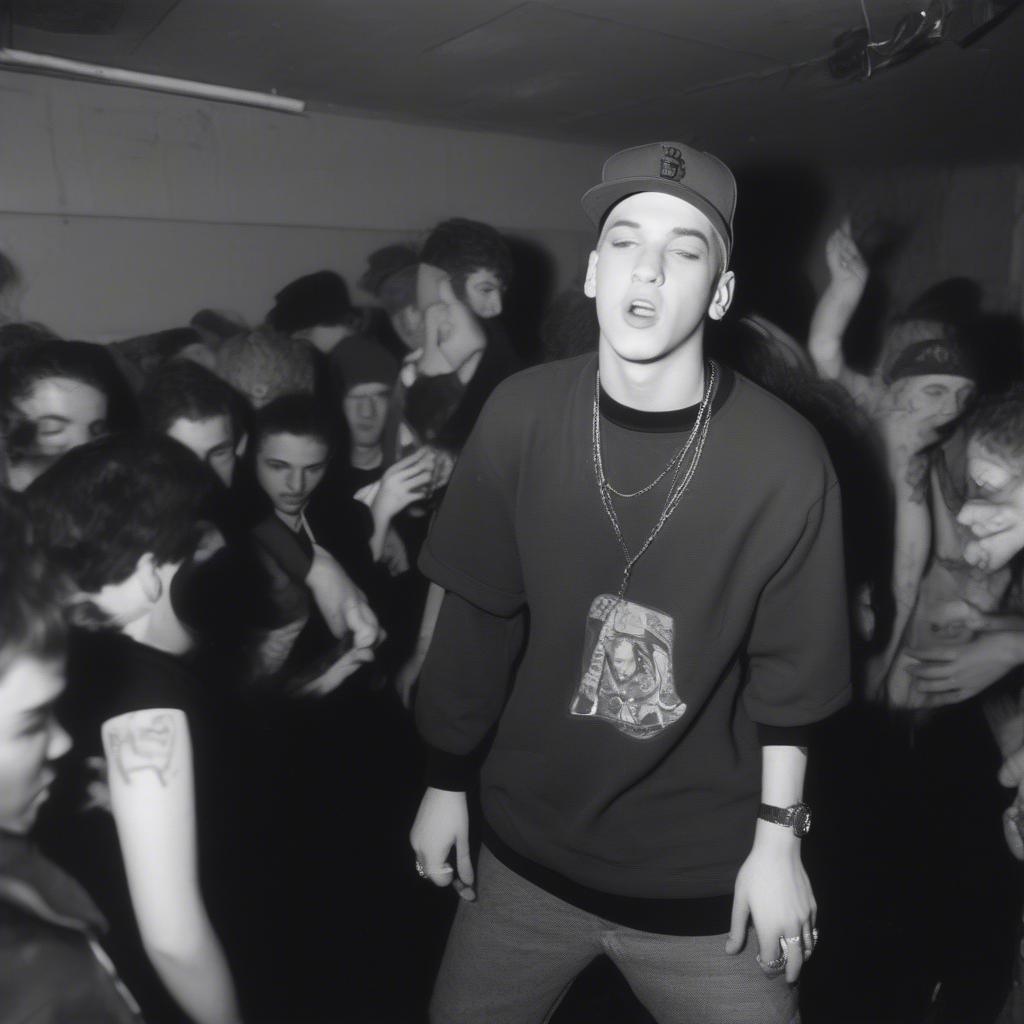The question of “Who Shot Tupac” remains one of hip-hop’s most enduring mysteries, a chilling reminder of the violence that tragically cut short the life of a legendary artist. Over two decades later, the events surrounding Tupac Shakur’s death on September 13, 1996, continue to fuel speculation, conspiracy theories, and a relentless pursuit of truth. While officially unsolved, the case continues to captivate the public imagination, prompting countless investigations, documentaries, and debates. This article delves into the details surrounding Tupac’s murder, examining the key players, potential motives, and lingering questions that remain unanswered.
Table Content:
- The Night of the Shooting: A Timeline of Events
- Key Suspects and Motives in the Tupac Shooting
- Orlando Anderson and the Southside Crips
- The East Coast/West Coast Rivalry: Bad Boy Records and Beyond
- Unanswered Questions and Ongoing Speculation about Who Shot Tupac
- The Missing Murder Weapon
- Witness Testimony and the Code of Silence
- The Legacy of Tupac and the Search for Justice
- Continuing Investigations and Renewed Hope
- Conclusion
The Night of the Shooting: A Timeline of Events
On the night of September 7, 1996, Tupac Shakur attended a Mike Tyson boxing match at the MGM Grand in Las Vegas. Following the fight, a confrontation occurred in the casino lobby between Tupac and Orlando Anderson, a known Crip gang member, sparking a brawl captured on security footage. This altercation is widely believed to be a crucial piece of the puzzle surrounding the later shooting.
Later that evening, Tupac, along with Death Row Records CEO Suge Knight, and others, were cruising in a black BMW 750iL when a white Cadillac pulled up alongside them at a red light on Flamingo Road and Koval Lane. Gunfire erupted from the Cadillac, striking Tupac multiple times in the chest, pelvis, and hand. Suge Knight sustained minor injuries from shattered glass.
Tupac was rushed to the University Medical Center of Southern Nevada, where he underwent surgery and was placed on life support. After six days, on September 13, 1996, Tupac Shakur succumbed to his injuries at the age of 25.
Key Suspects and Motives in the Tupac Shooting
The investigation into who shot Tupac has focused on several key suspects and potential motives, primarily revolving around the East Coast/West Coast hip-hop rivalry and gang affiliations.
Orlando Anderson and the Southside Crips
Orlando Anderson, the Crip involved in the MGM Grand altercation, emerged as a prime suspect. The beating of Anderson, allegedly orchestrated by Tupac and his entourage, provided a strong motive for retaliation. Anderson was later killed in a drive-by shooting in Compton, California, in 1998.
The East Coast/West Coast Rivalry: Bad Boy Records and Beyond
The intense rivalry between the East Coast and West Coast hip-hop scenes in the mid-1990s added another layer of complexity to the investigation. Tupac, a prominent figure in the West Coast scene associated with Death Row Records, was often at odds with artists and figures from the East Coast, most notably The Notorious B.I.G. and Bad Boy Records. While no concrete evidence has linked figures from the East Coast directly to the shooting, the rivalry remains a significant backdrop to the events.
 Tupac Shakur Crime Scene in Las Vegas
Tupac Shakur Crime Scene in Las Vegas
Unanswered Questions and Ongoing Speculation about Who Shot Tupac
Despite extensive investigations, the question of who shot Tupac remains officially unsolved. The lack of cooperation from witnesses, conflicting accounts, and the passage of time have all contributed to the enduring mystery.
The Missing Murder Weapon
The murder weapon, believed to be a .40 caliber Glock, was never recovered, hindering ballistic analysis and potentially crucial evidence linking the shooter to the crime.
Witness Testimony and the Code of Silence
Many witnesses present on the night of the shooting were reluctant to cooperate with authorities, potentially due to fear of retaliation or adherence to a “street code” of silence. This lack of cooperation hampered the investigation significantly.
 Tupac Shakur Performing on Stage
Tupac Shakur Performing on Stage
The Legacy of Tupac and the Search for Justice
Tupac Shakur’s influence on music and culture extends far beyond his death. His music continues to resonate with audiences worldwide, addressing themes of social injustice, inequality, and struggle. The unsolved mystery of his murder, however, remains a painful reminder of a life cut short and a justice yet to be served.
Continuing Investigations and Renewed Hope
While the official investigation remains cold, recent developments and renewed interest in the case have sparked hope for potential breakthroughs. New documentaries and investigative reports continue to explore previously overlooked evidence and witness testimonies, keeping the case in the public eye.
 Tupac Shakur Mural in Los Angeles
Tupac Shakur Mural in Los Angeles
Conclusion
The question “who shot Tupac” continues to haunt the world of hip-hop and beyond. While the case remains officially unsolved, the enduring fascination with Tupac’s life and legacy fuels ongoing speculation and a relentless search for answers. The tragic loss of Tupac Shakur serves as a reminder of the fragility of life and the importance of seeking justice for victims of violence. The mystery surrounding his death continues to inspire documentaries, investigations, and discussions, ensuring that the memory of Tupac Shakur and the pursuit of truth remain alive.
